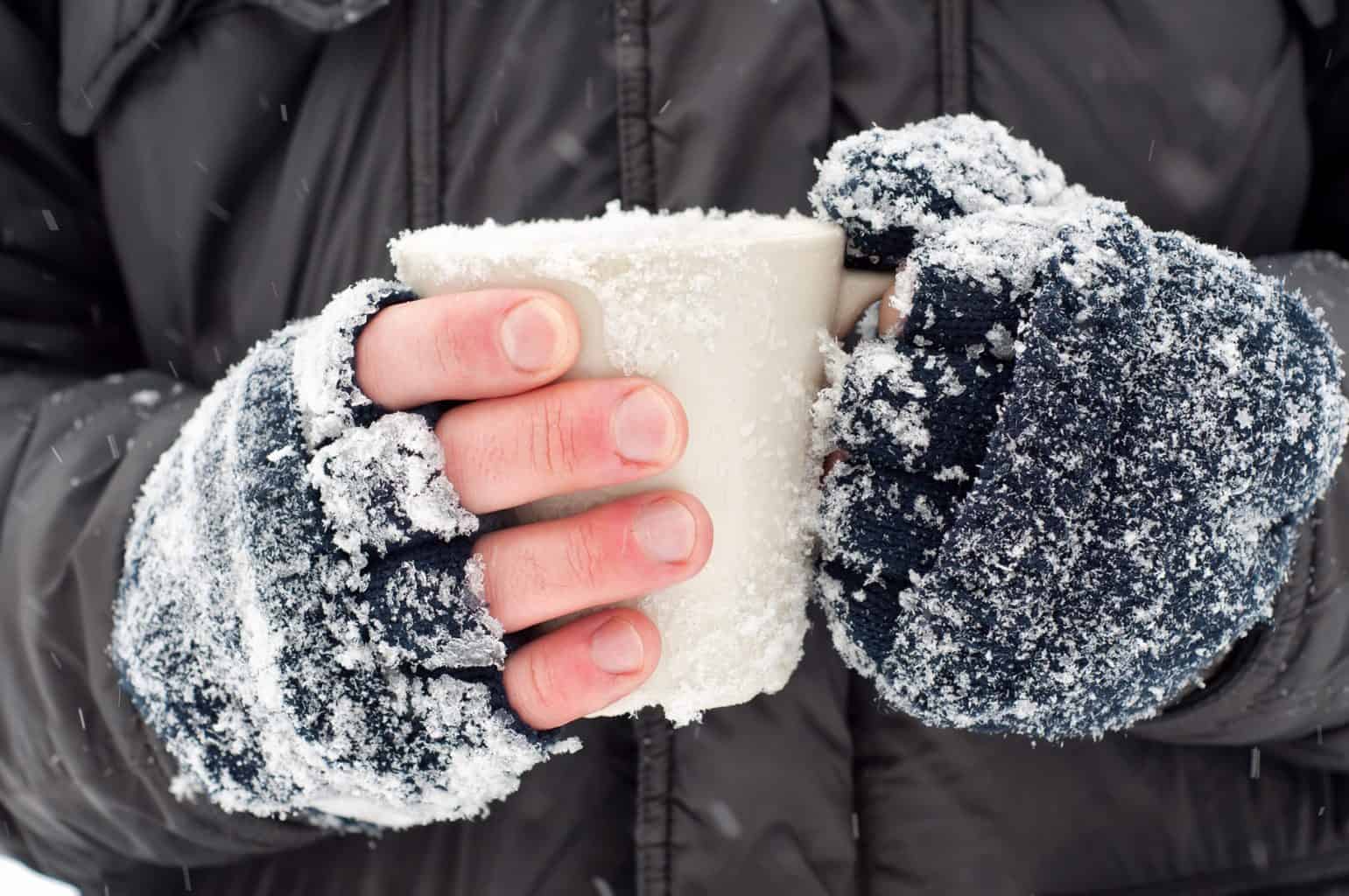
What is Frostbite?
Frostbite occurs when the body is so cold that ice crystals form within the skin causing damage.
The areas mainly affected by frostbite are hands, feet, ears, nose and cheeks.
As with burns, frostbite severity is measured in degrees:
- First degree frostbite: Temporary tenderness and reddish skin. This will not result in permanent damage.
- Second degree frostbite: Blisters and some tissue and nerve damage. This can result in permanent hypersensitivity to cold and increase the risk of future frostbite.
- Third degree frostbite: Tissue death, requiring skin grafting or amputation.
Windchill, which is temperature combined with wind speed, increases the risk of frostbite.
Symptoms of frostbite
- Tingling and burning are early symptoms and a warning to get out of the cold immediately. If this isn’t possible, move around vigorously to increase circulation.
- The next stage is numbness. By this time you probably have frostbite.
- In the third stage, skin may appear pale or white and cold to the touch.
- In the final stages, swelling, hemorrhage, and blisters may form after the skin thaws.
How to prevent frostbite
- Keep your skin dry. Wet skin freezes more rapidly. Dress in layers of light rather than bulky, heavy clothes. Waffle-weave and cotton clothing trap air; polypropylene will absorb perspiration away, reducing heat loss.
- Choose clothes such as a closely woven shirt and slacks topped by a sweater. Wool provides good insulation. A good outer layer is a hooded parka.
- Down-filled garments are warm but useless when wet; synthetics provide better insulation in adverse conditions.
- Wear a hat or at least earmuffs that cover your ears. The body loses the greatest amount of heat through the scalp, and the skin and underlying tissues of the ears are very thin, so ears are especially prone to frostbite. Use a scarf or ski mask to protect your face.
- Light cotton socks topped by wool or synthetic socks will keep your feet warm. Boots should be high enough to cover your ankles. Avoid boots that are too tight; they decrease circulation.
- Protect your hands with mittens rather than gloves so fingers can warm each other.
- Don’t wear earrings outside in the cold. They increase frostbite risk because metal conducts cold.
- Be prepared for winter travel in your car. Carry an emergency kit, food, blankets, extra clothing, boots, matches, etc.
- Avoid contact with metal and gasoline as it may be supercooled.
- Avoid alcoholic beverages, which increase the rate at which the body cools and cloud judgment and sense of touch.
- Avoid smoking, which decreases circulation.
First aid for frostbite
- Avoid rubbing the area, especially with snow, which will worsen the injury.
- Don’t walk on frostbitten feet or use a frostbitten area. If you must walk, the feet will suffer less damage if left frozen or padded. If feet are thawed, have someone carry you, if possible.
- Avoid thawing an area if you are far from help or if there is a chance of refreezing, as this will cause more damage.
- If you are in a permanent shelter and can thaw a frostbitten area:
- Immerse area for 20-45 minutes in tepid (98° - 104°) water. Avoid using hot water which may burn the area, causing more damage. As the area thaws it will turn pink or bright red and sensation may return.
- Do not put salves or creams on the frostbite.
- Protect the frostbite area from refreezing and seek medical attention.

